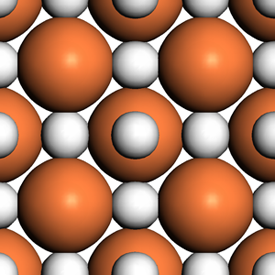
Submitted by Prof. C.J. Pickard on Wed, 05/10/2016 - 20:03
An international collaboration, including the University of Cambridge, has shown that quantum mechanical effects are central to the high temperature (up to 203K, -70 degrees Celsius) superconductivity that has been measured in hydrogen sulphide under extreme compression.
Earlier results of the collaboration addressed the superconducting mechanism[1] and the structure and decomposition[2] of hydrogen sulphide under pressure. In the current article it is shown that the crystal structure that exhibits the highest temperature superconductivity is adopted a lower pressures than would be expected in a purely classical picture.
[1] "High-pressure hydrogen sulfide from first principles: a strongly anharmonic phonon-mediated superconductor", I Errea, M Calandra, CJ Pickard, J Nelson, RJ Needs, Y Li, H Liu, Y Zhang, , Yanming Ma, Francesco Mauri Physical review letters 114 (15), 157004, 2015
[2] "Dissociation products and structures of solid H2S at strong compression", Y Li, L Wang, H Liu, Y Zhang, J Hao, CJ Pickard, JR Nelson, RJ Needs, Wentao Li, Yanwei Huang, Ion Errea, Matteo Calandra, Francesco Mauri, Yanming Ma Physical Review B 93 (2), 020103, 2016
University of Cambridge news article:
http://www.cam.ac.uk/research/news/quantum-effects-at-work-in-the-worlds-smelliest-superconductor
Ion Errea, Matteo Calandra, Chris J. Pickard, Joseph R. Nelson, Richard J. Needs, Yinwei Li, Hanyu Liu, Yunwei Zhang, Yanming Ma and Francesco Mauri, "Quantum hydrogen-bond symmetrization in the superconducting hydrogen sulfide system", Nature 532, 81-84 (07 April 2016) DOI: 10.1038/nature17175

